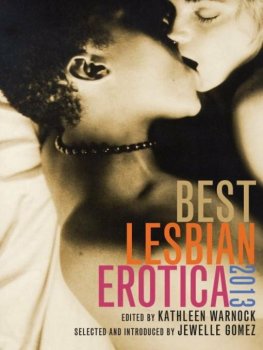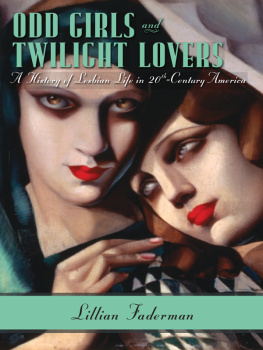From Nowhere to Everywhere: Lesbian Geographies
From Nowhere to Everywhere: Lesbian Geographies has been co-published simultaneously as Journal of Lesbian Studies, Volume 4, Number 1 2000.
First published by :
Harrington Park Press, 10 Alice Street, Binghamton, NY 13904-1580 USA
Harrington Park Press is an imprint of The Haworth Press, Inc., 10 Alice Street, Binghamton, NY 13904-1580 USA.
This edition published 2011 by Routledge:
| Routledge | Routledge |
| Taylor & Francis Group | Taylor & Francis Group |
| 711 Third Avenue | 2 Park Square, Milton Park |
| New York, NY 10017 | Abingdon, Oxon OX14 4RN |
From Nowhere to Everywhere: Lesbian Geographies has been co-published simultaneously as Journal of Lesbian Studies, Volume 4, Number 1 2000.
2000 by The Haworth Press, Inc. All rights reserved. No part of this work may be reproduced or utilized in any form or by any means, electronic or mechanical, including photocopying, microfilm and recording, or by any information storage and retrieval system, without permission in writing from the publisher.
The development, preparation, and publication of this work has been undertaken with great care. However, the publisher, employees, editors, and agents of The Haworth Press and all imprints of The Haworth Press, Inc., including The Haworth Medical Press and Pharmaceutical Products Press, are not responsible for any errors contained herein or for consequences that may ensue from use of materials or information contained in this work. Opinions expressed by the author(s) are not necessarily those of The Haworth Press, Inc.
Cover design by Monica Seifert.
Library of Congress Cataloging-in-Publication Data
From nowhere to everywhere : lesbian geographies / Gill Valentine, editor.
p. cm.
Has been co-published simultaneously as Journal of lesbian studies, Volume 4, Number 1 2000.
Includes bibliographical references and index.
ISBN 1-56023-132-7 (cloth: alk. paper)-ISBN 1-56023-127-0 (pbk : alk. paper)
1. Lesbians. 2. Human geography. 3. Spatial behavior. I. Valentine, Gill, 1965-
HQ75.5 .F76 2000
305.489664-dc21 00-022258
From Nowhere to Everywhere: Lesbian Geographies
CONTENTS
Gill Valentine
Sarah A. Elwood
Jenny Lo
Theresa Healy
Celeste Wincapaw
Ali Grant
Gill Valentine
Cyndra MacDowall
ABOUT THE EDITOR
Gill Valentine, PhD, is Professor of Human Geography at the University of Sheffield, where she teaches social geography and qualitative research methods. Her research interests include geographies of sexualities, food and foodscapes, and children, youth, and parenting. She is co-editor of Mapping Desire: Geographies of Sexualities (Routledge, 1995), and Cool Places: Geographies of Youth Cultures (Routledge, 1998), and co-author of Consuming Geographies: You Are Where You Eat (Routledge, 1997).
Gill Valentine
SUMMARY. This paper provides an introduction to this volume by outlining the emergence of lesbian geographies and the contribution they have made to understanding the mutual constitution of sexuality and space. It begins by tracing the development of these geographies from initial studies which aimed to map lesbian neighbourhoods to later work which has drawn on theorists such as Judith Butler, to explore the production and regulation of heterosexual space. It then goes on to situate the papers included in this volume within this literature by outlining their contents and the themes which crosscut them. [Article copies available for a fee from The Haworth Document Delivery Service: 1-800-342-9678. E-mail address: getinfo@haworthpressinc.com http://www.haworthpressinc.com>]
KEYWORDS. Geography, sexuality, lesbian, space
In the late eighteenth century the British queen, Queen Victoria, when confronted by her ministers with a bill to out-law same sex sexual relationships, famously claimed that lesbians did not exist. As a result they were rendered invisible in subsequent legislation on homosexuality. A century later lesbian activists are queering the streets and shopping malls of the UK under slogans such as we are everywhere. This transformation in lesbian visibility-from nowhere to every-where-is laden with geographical significance. It reflects the fact that lesbian identities and lifestyles are increasingly being publicly articulated in the urban and, though less commonly, in the rural landscape too; and that lesbians are more openly challenging the taken-for-granted production of everyday environments as heterosexual spaces.
Within the discipline of Geography, the late 1980s, but particularly the 1990s, has seen the emergence of an exciting new body of work devoted to exploring these geographies of desire (this work is reviewed in Bell and Valentine 1995a, Grant 1998 and Binnie and Valentine in press). Some of the first geographical work on lesbian and gay mens lives argued that they lead distinct lifestyles (defined to a lesser or greater extent by their sexuality and the reactions of others to that sexuality) which are articulated spatially, creating distinct lesbian and gay social, political and cultural landscapes. Much of this pioneering work was about the lives of gay men, although notable exceptions included preliminary, and somewhat debatable, attempts by Barbara Weightman (1981) to map lesbian neighbourhoods in the US and Hilary Winchester and Paul White (1988) to locate lesbian neighbourhoods within inner-city Paris.
Perhaps the most controversial study of lesbian and gay space was produced by the urban sociologist Manuel Castells (1983). Drawing on work conducted in San Francisco, he argued that lesbian and gay commercial and neighbourhood bases in both the US and Europe were dominated by gay men and institutions of gay male culture. And he used this as evidence first to claim that lesbians lacked similar territorially based communities because women are poorer than gay men and have less choice in terms of work and location (1983: 140), and secondly to make rather essentialised claims about gender differences in the way men and women relate to space. He argued that men seek to dominate and therefore achieve spatial superiority, while he claimed that women have few territorial aspirations, attaching more importance to social relationships.
Subsequently, a host of studies of lesbian neighbourhoods in North America and the UK have been produced to rupture Castells assumptions (Adler and Brenner 1992, Rothenberg 1995, Peake 1993, Valentine 1995a). These all suggest that lesbians do create spatially concentrated communities but that these neighbourhoods are often composed of clusters of lesbian households and sometimes countercultural institutions such as alternative bookstores or co-operative stores rather than commercial bars and institutions. As a result these lesbian neighbourhoods often have a quasi-underground character which makes them less visible than the gay mens scene bars to those not in the know. Indeed, Peake (1993), Valentine (1995a) and Rothenberg (1995) all suggest that women often learn about lesbian neighbourhoods through word of mouth, a process neatly captured in the title of Rothenbergs essay: And she told two friends.
A lesbian presence is not only evident in the landscape of major towns and cities in North America and western Europe, gay women also live in and use the countryside (Bell and Valentine 1995b). Examples include Joan Nestles account of lesbian cruising in the outdoors, and the UK magazine



